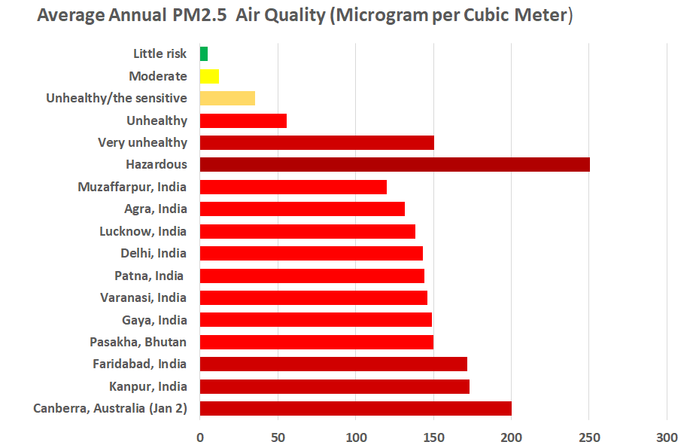Australia’s Burn-Me Cities: Sydney Morning Herald
Australia's Burn-Me Cities: Sydney Morning Herald
Read the article from Sydney Morning Herald about the need for cities to plan for climate change.
Elizabeth Farrelly is a Sydney-based columnist and author who holds a PhD in architecture and several international writing awards. She is a former editor and Sydney City Councilor. Her books include ‘Glenn Murcutt: Three Houses’, ‘Blubberland; the dangers of happiness’ and ‘Caro Was Here’, crime fiction for children (2014).
Read more about air quality from Bliss Air: “PM2.5 refers to atmospheric particulate matter (PM) that have a diameter of less than 2.5 micrometers.” Since they are so small and light, fine particles tend to stay longer in the air than heavier particles…. Owing to their minute size, particles smaller than 2.5 micrometers are able to bypass the nose and throat and penetrate deep into the lungs and some may even enter the circulatory system.”

Canberra in early January 2020 (Source: James Dyer)

Toxic: Air quality rankings for particulate matter, measuring 2.5 micrometers in diameter or less per cubic meter, from the US Environmental Protection Agency; the average annual reading for the world’s most polluted cities; and the January 2 spike for Canberra, which normally reports readings less than 20 (Source: City data, World Health Organization; air health rankings, Bliss Air; Canberra reading, New York Times)